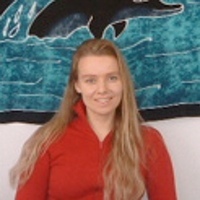Investment information
- Type:
- Equity offering
- Invested:
- €1,653,360.00
- Equity offered:
- 3.84 – 20.85 %
- Price per share :
-
€2.50
min investment 300 shares
- Number of existing shares:
- 2,504,784
- Pre-money valuation:
- €6,261,960.00
Our story
Injeq Oy (Ltd) was founded when technology experts identified a possible solution for a known medical need. The vision of Riitta, Katja, and Jari of a smart needle has since developed from an idea to clinical research at neonatal intensive care units. Now the company has a ready technology and a clinically-proven product that provide a sustainable competitive advantage.
Injeq IQ-Needle™ improves the safety of demanding punctures
Acute lymphocytic leukemia (ALL) is the most common cancer type diagnosed in children. The treatment for ALL usually lasts for 30 months, during which time around 20 lumbar punctures (also known as a spinal tap) are performed on the patient. Each puncture is a demanding procedure, because the tip of the needle must be inserted precisely into the spinal canal. If the needle is inserted even slightly too far, it can cause bleeding. Bleeding would allow cancer cells to enter the spinal canal, lessening the patient’s chances of recovery. Therefore it is vital to know the position of the needle tip at all times.
Injeq IQ-Needle™ was developed for a recognized need
The above example is only one of the situations where it is important to know the position of the needle tip. Three leading specialists in medicine and medical technology studied the problem in Tampere, Finland, nearly a decade ago before they began developing a smart needle that would solve the problem. The result is the Injeq IQ-Needle™, which has been proven in clinical trials and is now ready to be launched onto the market.
Unique functionality
The operating method of the IQ-Needle™ is unique: The tip of the needle (lumen) and the supporting part inside it (stylet) are used during the puncture to measure the bioimpedance of the tissue touching the needle tip. A tissue analyzer of the Injeq BZ-300 series measures bioimpedance 200 times per second, at 15 different frequencies. This allows for identifying the type of tissue surrounding the tip of the needle at any given time. The tissue type options contain e.g. muscle, fat, tendon, skin – or cerebrospinal fluid (CSF). In lumbar punctures, the smart needle emits a sound signal when the tip of the needle touches CSF, i.e. when the needle has reached the spinal canal and should not be inserted any further. The youngest patient treated during the clinical trials was a two-day-old baby. Taking a sample with a normal needle failed four times, but with a smart needle the puncture was done successfully with the first attempt.
The wide range of applications generate a huge market potential
The method has a sustainable competitive advantage and is suited to a wide range of applications. For lumbar punctures, the most difficult procedures are those carried out on newborn babies and children. In this target group, the benefits of and need for a smart needle are so obvious that it is the first commercial application of the technology. Other applications such as tumor biopsies to diagnose cancer and administering anticancer drug, joint injections and vein injections provide almost unlimited opportunities for growth. Each application such as these is a large market even on its own, meaning that the combined market potential is huge.
In 2025, Injeq IQ-Needle™ will be a part of standard care
At present, there is no product similar to InjeqIQ-Needle™ on the market. While various products with similar functionality are being developed based e.g. on pressure sensing and light reflection technologies, these technologies are still a long way from being introduced into the market. Therefore, the company has an excellent opportunity to set a new standard for care procedures that involve demanding punctures and injections. The functionality of the Injeq IQ-Needle™ has been proven in clinical trials, and it is ready to be launched onto the market. Now the company seeks funding to acquire CE certification that is required for marketing authorization, and for starting production and sales operations.
Our business & market situation
Product and demand
The company’s first product will be a spinal needle that allows for collecting diagnostic samples of cerebrospinal fluid (CSF) and for administering intrathecal drugs into the CFS e.g. as part of leukemia treatment. These lumbar punctures (also known as a spinal tap) are especially demanding when treating small children, and Nordic pediatric hospitals in particular have expressed their interest in starting to use the product as soon as possible. Treatment of acute lymphocytic leukemia (ALL), the most common cancer type in children, typically includes around 20 lumbar punctures per patient. The procedure includes risks that can cause injuries and additional suffering, and make the treatment more complicated. According to an extensive Canadian study [Shaikh et al. 2014], punctures cause tissue damage in 18 per cent of leukemia patients. This is directly linked to a lower survival rate: in other words, traditional needles can cause damage that reduces the changes of recovery.
Apart from cancer treatments, other typical reasons for lumbar punctures include suspected meningitis, where a CSF sample is required to confirm the diagnosis. While collecting such a sample from child patients with a traditional needle is problematic, completing the procedure with the Injeq IQ-Needle™ smart needle is easy. According to surveys [Baxter et al. 2006; Nigrovik et al. 2007; Greenberg et al. 2008; Glatstein et al. 2011], 24–40 % of punctures performed on newborn babies fail or result in tissue damage. In addition to suffering, failed punctures, consequent delays, and poor quality samples cause expenses, as the intensive care of these children is unnecessarily prolonged. On the other hand, meningitis that is left untreated or is not diagnosed because of a poor-quality sample is always life-threatening. It is also among the most significant acquired causes of death of newborn babies.
Our product also has benefits regarding procedures carried out on adult patients. These include a reduced infection risk, which improves patient safety. The aim is that once the smart needle has become an established method of lumbar puncture on child patients, it will also be taken into use in similar procedures performed on adults, as these are not easy or risk-free either.
Business model
The estimated annual market potential in European pediatric hospitals is 51 million euros. The estimate is based on patient and procedure volumes, number and types of hospitals, and expected sales prices (28 EU member states, Norway, and Switzerland). The greatest need for the product is in the treatment of childhood leukemia and diagnostics and intensive care for newborns. These specialized fields account for around 60% of medical procedures carried out on children. The sales strategy is that the transition to using the smart needle for all lumbar punctures be completed simultaneously throughout each individual pediatric hospital to ensure coherent operating methods. The combined annual global market for applications relating to the technology is around 2 billion euros.
The sales method and pricing model will be adapted to each market. The most common model will be one-off sales of tissue analyzers. This will generate a quick income flow, while also kicking off the sales of smart needles as disposable items. Depending on the target market and the financing model, the analyzers can also be sold using a leasing contract or the needle-as-a-service model. In the latter case, the customer will be charged for the needles based on use or number of patients. The business and pricing models suited to each market and the relative prices of the components will be discussed with customers and distributor partners. The aim is that the price will not constitute a barrier to buying the products.
Sales, production, and distribution
The sale and delivery of the products require CE certification, which the company expects to receive within 10 months from the closing date of the share issue. The first target market is European pediatric hospitals where our product will enhance the precision and safety of lumbar punctures. Pediatric hospitals operate either in conjunction with university hospitals or maternity hospitals, or as individual units. In the early stages, the sales operations will focus on the leading university hospitals in particular, which will serve as a reference and help boost Injeq’s products as the new European standard in clinical practice. Negotiations are currently underway with the leading Nordic university hospitals. The company’s products have been clinically tested at Finnish university hospitals. The university hospitals of Stockholm and Copenhagen have expressed their interest in starting the test use of the products as part of clinical device testing before the products are granted CE certification.
Injeq Oy owns the key rights to its products. As the manufacturer of the products, the company is also responsible for their safety. The needles will be manufactured in the company’s own production facilities in Tampere using components from various manufacturers. The packaging and sterilization will be purchased from a specialized European operator. With the present equipment investments, the production capacity will be around 3000 needles a month if the workers operate in one shift. It will be relatively easy to expand the production as the sale volumes increase. The analyzer manufacture will be procured from a Nordic contract manufacturer.
European sales will be based on local distributors. Local companies with existing customer relations with pediatric hospitals will be selected as distributors. The identification of distributors and discussions with them have been started but no distribution contracts have been signed as yet. The aim is to complete the organization of distribution operations in a few countries so that the sales operations can be launched immediately after the products have received marketing authorization.
The company will use its own organization to manage the sales in Finland and cooperation with Nordic research hospitals, as well as to provide support to its distributors. The clinical cooperation with various hospitals in the past three years has provided an excellent foundation for starting the sales operations.
Competition
Spinal needles designed for lumbar punctures are used widely all over the world. Lumbar puncture has been used in medicine for over a century. Today, around 100 million lumbar punctures are performed on patients every year. The current practice is both a competitive constraint and an opportunity. The opportunities arise from the commonness of the procedure and from the problems and risks inherent to the current method. These problems and risks can be mitigated by the use of the Injeq IQ-Needle™. The competitive constraint, on the other hand, derives from the view of medical professionals that the current method is sufficiently efficient. Pediatricians are not satisfied with the current solutions, because a lumbar puncture is a demanding procedure especially when performed on children and also the risks are higher than in case of adults when the traditional needle is used. For this reason, the company will start by focusing on their needs, as it is likely that the use of the smart needle will spread at a later stage and become a standard method also in procedures performed on adults.
There is no existing market segment for a smart lumbar needle, as no similar products can be found on the market. Therefore, Injeq Oy will become the technology leader and leader in the sector once the product is on the market. The established needle manufacturers know our company, and are keenly monitoring its development. There is a good reason for this, as the company’s vision is to revolutionize the current treatment practice. This may be reflected in the profitability of at least some of the current needle manufacturers. As we get closer to our goal, the demand for the traditional needles will disappear, one hospital ward at a time. On the other hand, there is room on the global market for partnerships with conventional needle manufacturers. This would give us access to their logistics as well as their sales and distribution channels.
Thus far, needles that recognize tissue types, such as the Injeq IQ-Needle™, have only been researched by universities and in the company’s own studies. Problems inherent to lumbar punctures are widely recognized. Attempts have been made to develop competitive solutions based e.g. on measuring the pressure on the needle tip, or the light reflected from the tip. However, the technology based on pressure or manometry has been found to be inadequate, whereas the light-based solutions have not yet reached the commercialization phase. All in all it can be stated that there are no competing products on the market with corresponding functionality, and that the development and commercialization of such competing products is far behind Injeq.
Requirements of the customers and the authorities
Development of new medical devices is not easy but once on the market, they often acquire a stable market position. Regulatory approvals required for medical devices are a key barrier to sales operations. Injeq Oy has for a long time manufactured devices for research use that meet the European requirements. In addition, the company has a plan for a ten-month project to start production, and to complete the tests and audits required by European regulatory practices. Based on the company’s understanding, most of the clinical proof required for the market approval has been collected. After the European market approval, the company will focus on acquiring market approval in the United States.
Sustainable competitive advantage
The company’s products cannot easily be copied by competitors. The product entity includes a tissue analyzer, disposable needles, and a cable that connects the two. Neither the needle nor the analyzer can be easily copied or replaced. To protect its rights, the company has either acquired or applied for patents on four different technologies. While these patents protect the company’s business operations to a certain extent, also non-patentable information collected through research and clinical trials contribute to the sustainable competitive advantage.
The company’s tissue identification algorithms are proprietary and confidential, and new measuring data is collected when the products are used. This facilitates continuous development of the products and the optimization of the algorithms. Competitors must complete corresponding clinical trials, giving Injeq a clear head start on the market. The company’s goal is that Injeq IQ-Needle™ will become the most popular treatment practice in the field. In such a situation it might not be ethically acceptable to repeat the clinical patient trials if the same level of safety cannot be achieved using traditional or competing products as with the company’s product.
Growth paths
The company’s first market will cover lumbar punctures performed at European children’s hospitals. Success on this market is a central goal and main focus of the company. Sales operations will start in the Nordic countries. The aim is to quickly expand operations to large European countries. After this, the company has various significant growth path options. Investments in these will be considered case-specifically. However, it is clear that the company’s technology is disruptive and will revolutionize the global injection needle market. The main growth path options of the coming years are introduced below.
- Extending sales operations to the United States. The United States offers significant opportunities. Based on the company’s knowledge, marketing authorization can be acquired through FDA’s De Novo process meant for innovative and low-risk products (Section 513(f)(2) of the US FD&C Act). Requirements of this process have been taken into account in the company’s quality system. However, it is most natural to initiate the application process only after the European market approval (CE certification) has been granted to the product. This growth path and the resources (financing etc.) needed for it are being investigated as part of other operations, without major investments. It is estimated that decisions can be made in late 2018.
- Extending sales operations to other parts of the world. Wellbeing of children and the available resources to secure it are a clear growth area also outside Europe and the United States. Birth-rate is high for example in many Middle Eastern countries, where major investments are being made in the care of children. The European CE certification also serves as a basis for the approval process of many countries outside Europe, and relatively few official requirements are made in addition to it. Several distributors have approached the company. These will be considered once the CE certification has been granted.
- Procedures on adult patients. Lumbar punctures and spinal anesthesia are procedures that are significantly more often performed on adults than on children. The market of adult patients is a clear opportunity, even though the need is not considered as pressing as in case of child patients by medical professionals. The conservative nature of the market is also a barrier to sales. In this, the aim is to use pediatric wards as references and to emphasize the benefits of the technology and the reduced risks. Therefore, the ultimate goal is to extend operations from pediatric wards to adult wards. The benefits of this market area extension is that no new product development will be needed and the same distribution channels can probably be used for both types of wards. It can reasonably be expected that over the long term, the smart needle will become part of normal treatment practices, as the ease and enhanced safety facilitated by digital technology are valued highly.
- New product areas. The company is considering several product areas that offer significant opportunities. These product areas can be developed and commercialized either independently or with partners. Treatment of solid tumors is a good example of this. Based on the company’s clinical research, cancerous tissue can in certain cases be distinguished from healthy tissue in real time, and the state of the tumor can be determined. This is expected to provide benefits e.g. in taking biopsies and, in the future also in immunotherapeutic cancer treatments. The company aims to continue clinical research in cooperation with university hospitals based on the developed technology. This research can be completed as part of normal operations without significant investments.
Our team
Our staff consists of six professionals who have expertise in a wide range of fields including medical research, signal processing, clinical research, European regulation, and various areas of production, quality assurance, and corporate management.
The company has an active board that includes the original developers of the innovation and expert members from outside the company. The board supports the operational organization and participates actively in the development of the company also outside the normal board work.
M.Sc. (Industrial Engineering and Management) with over 10 years of experience in management tasks in high and medical technology companies.

Ph.D. (Biomedical Engineering) with solid expertise in business, research, and education.
M.Sc. (Industrial Engineering and Management) with over 20 years of experience in innovative high-technology products.
M.Sc. (Production Technology) with 20 years of industrial experience.
M.Sc. (Biomeasurement) with 5 years of experience in modelling, measuring, and data analysis tasks in the life science and bio sectors. She is currently writing a dissertation in medical technology on using bioimpedance measurement with medical instruments.
M.Sc. (Medical Physics) with special expertise in planning, implementing, and analyzing the results of clinical device research. He has strong theoretical and practical expertise in using bioimpedance measurement.
PhD (Technology) and professor of medical technology. 30 years of experience in research and education on medical devices and medical technology, and over 15 years of management experience in research and international organizations.

Professor, PhD (Medicine), Licentiate of Dentistry, specialist in oral and maxillofacial surgery, and specialized dentist. Over 30 years of experience in clinical work, research, and entrepreneurship.

Licentiate of Dentistry and M.Sc. (Technology). Developer of the original smart needle.

Dr. Tech with dissertation on growth company activities. Over 30 years of experience of serial entrepreneurship.

PhD (Medicine and Surgery).
